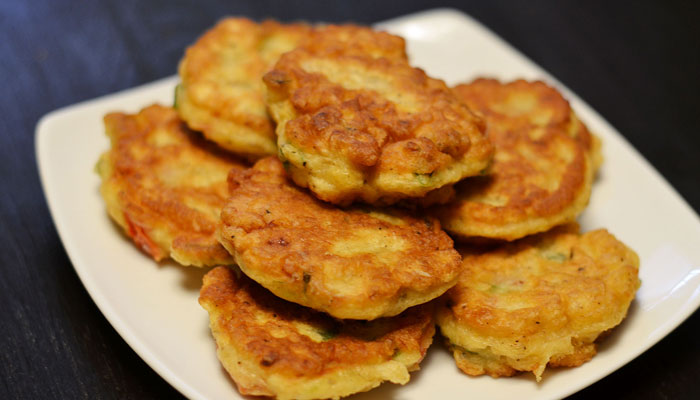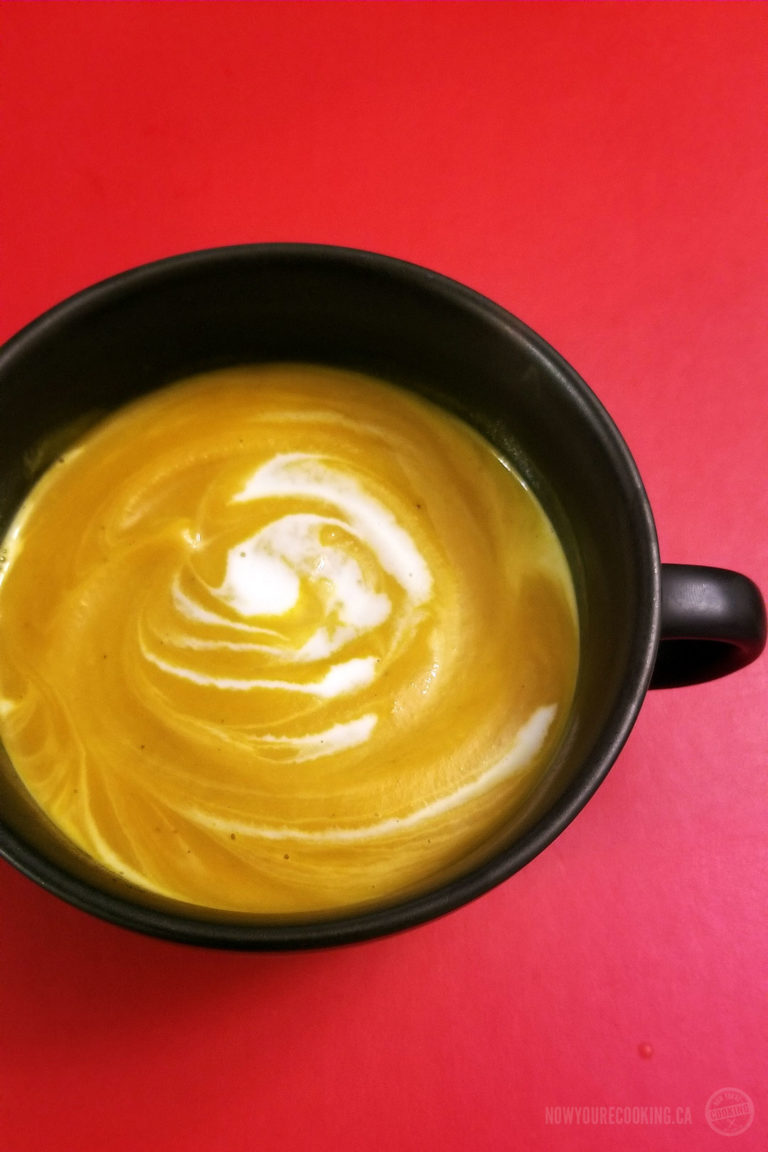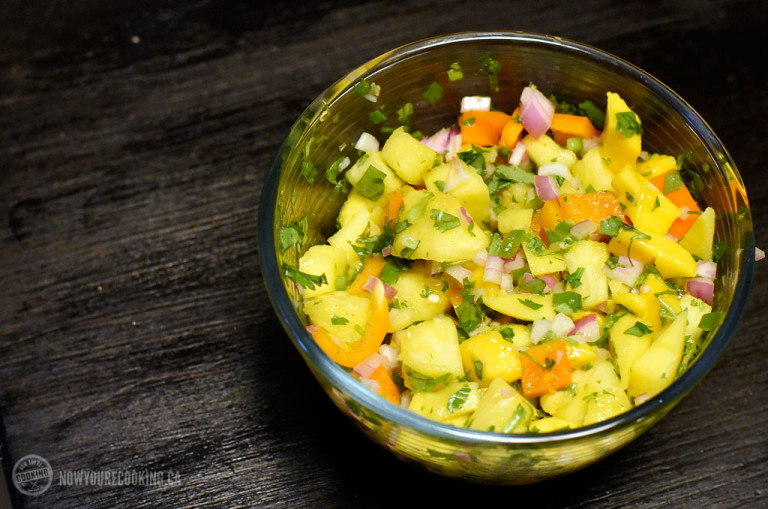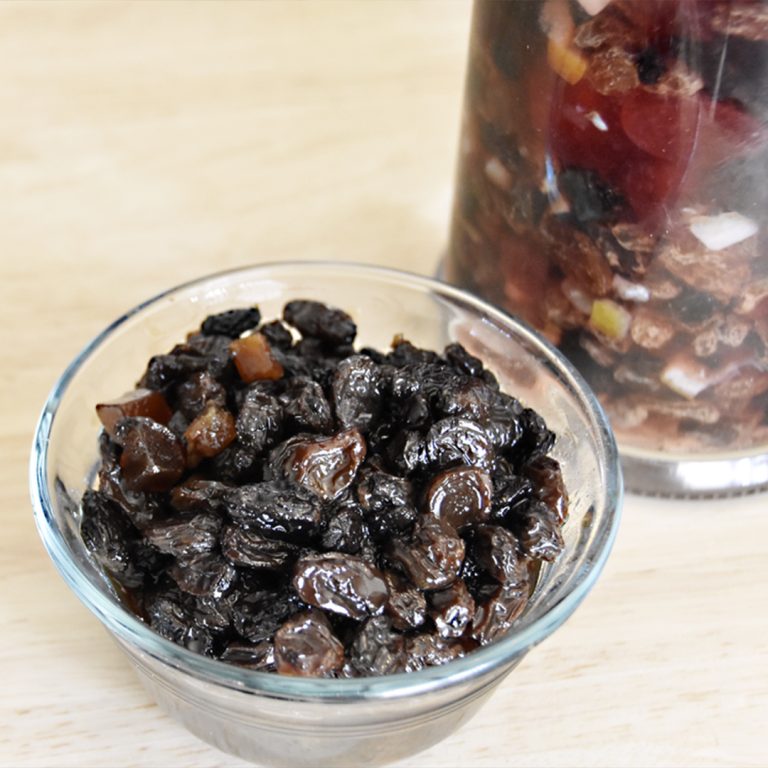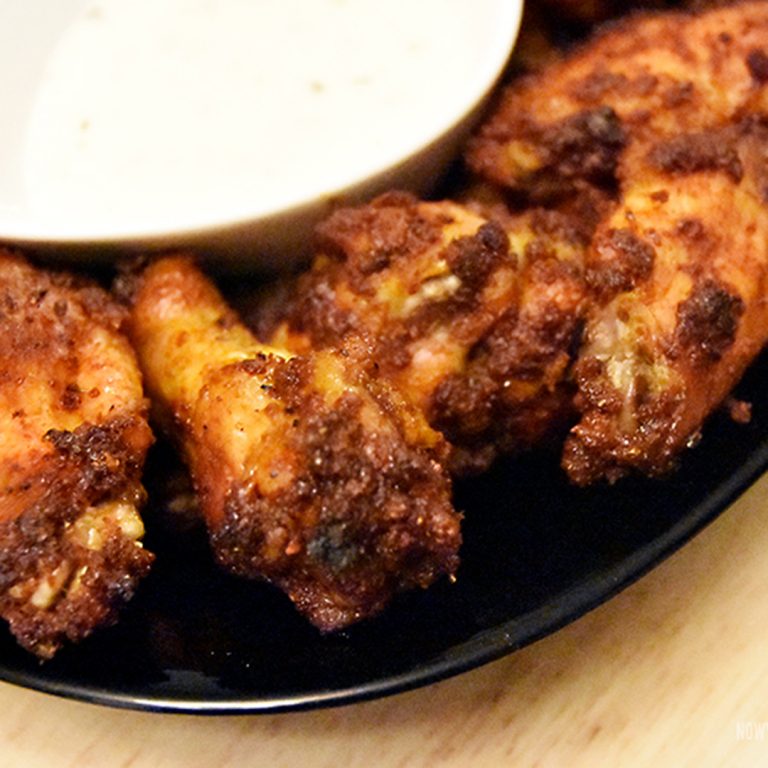Jollof Rice
This west-African seasoned rice dish packs a flavourful punch with a blend of tomatoes, peppers and spices. Building on the Nigerian-style, this is the perfect dish to feed a crowd.
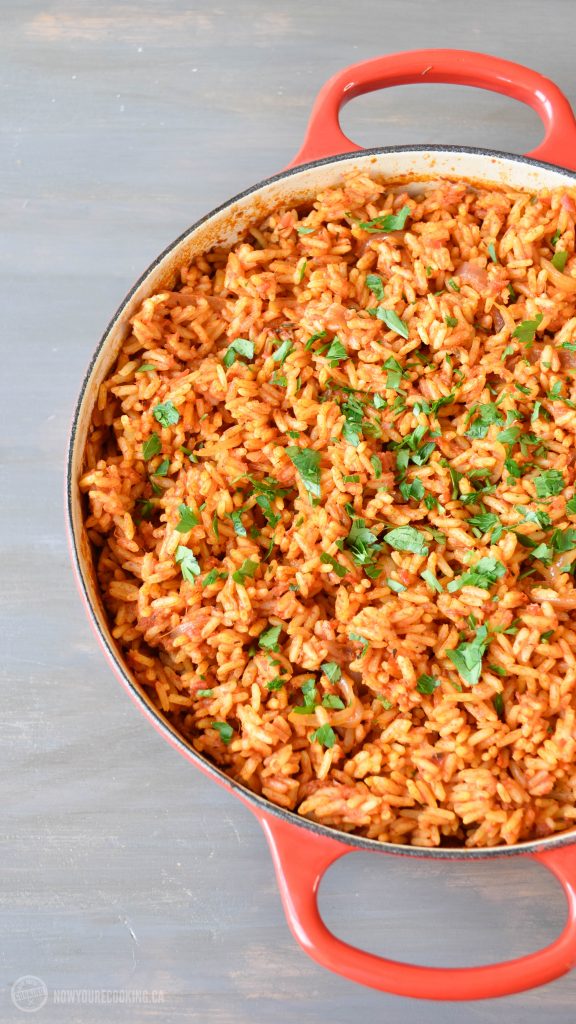
If anyone has been privy to the “jollof wars” that ensue between many African nations, knows that this dish is totally worth the competition. Whether you’re Nigerian, Ghanaian, Senegalese or from another West African country, the bragging rights to this delicious staple depends on what variation fits your palate. In all honesty, they’re all tasty, just prepared in a unique way.
The first time I had jollof rice was years ago at a party thrown by one of my Nigerian friends with various potluck dishes. But it wasn’t until I did my Anscestry DNA and I found out I had a good chunk of Nigerian blood in me that I decided to explore more foods from the region, and how to cook this flavourful rice dish on my own.
What is Jollof Rice?
Jollof rice is a spicy, tomato-based rice dish. The name Jollof comes from the name of the Wolof people. Based on this the origins of jollof rice can be traced back to the Senegambian region in West Africa around the 14th century with a dish known as thiéboudienne. Different regional varieties and adaptations of Jollof rice has shown the cultural diaspora within West Africa through centuries of travel and trade.
At it’s base, jollof rice is typically cooked in a flavourful tomato stew mixture (instead of just water): tomatoes, red bell peppers, onions, and chili pepper (like a scotch bonnet or habanero). These ingredients are puréed to form the cooking stew for the rice dish. Tomato paste, stock cubes, as well as various spices (such as thyme and curry powder) are used to add some extra flavour.
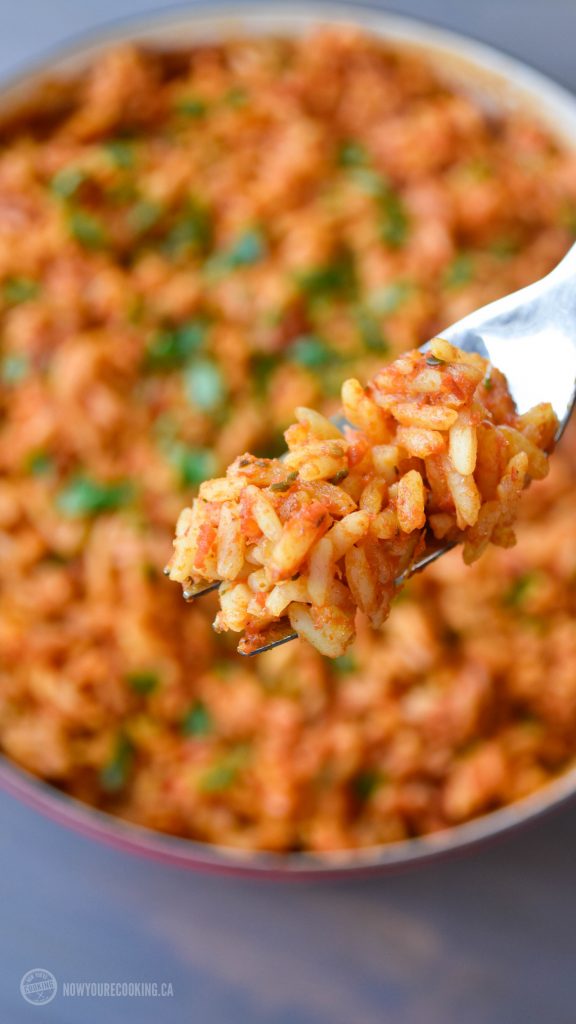
Who’s Jollof is better?
Although Senegal is widely considered to be the motherland region of the dish, most of the friendly jollof wars have prominently been between two countries: Nigeria and Ghana, maintained with the online hashtag #JollofWars.
Nigerian Jollof
Since I wanted to get more in tune with my own cultural history, I decided to focus on building the recipe for a Nigerian-style Jollof rice. The main thing that separates Nigerian Jollof from jollof from other regions is the use of parboiled rice. It is firmer than other rice varieties and less starchy.
Parboiled rice is rice that has been soaked, steamed and dried while it’s still in its hull, thus making the rice easier to process by hand. You can usually find parboiled (also called converted rice) in any grocery store. You’ll recognize it by it’s light amber colour.
Party Jollof is a common Nigerian dish which has a smokier flavour and meant to feed a crowd (hence the “party”). If you don’t have a large cauldron over firewood to cook this in, as it’s traditionally made, the smokiness can be mimicked on the stove-top or in the oven by letting the rice burn a bit at the bottom. Don’t worry–this adds to the sweetness. You can also add a bit of black or white pepper for this effect.
Ghanaian Jolloff
Basmati rice, a variety of long-grained rice commonly used in Thai and Southeast Asian cooking, is the key for Ghanaian jollof. The fragrant rice is softer and fluffier than regular white rice.
Ghanaian jollof also uses more warming spices, such as ginger, cinnamon or cloves in the cooking process.
How to Cook Jollof Rice
The key to cooking jollof is building up the flavour base. After you’ve made the tomato-pepper stew/puree the cooking process can begin on the stove-top.
Sautee the onions in oil for a few minutes until they’re softened. The curry powder, thyme and bay leaves help with the flavour. Tomato paste is another important part of this dish. Adding it to the hot pan helps brings out it’s natural sweetness which pairs well with the spicy scotch bonnet peppers that were added to the stew.
I usually add ginger and garlic to the blended mixture, but you can also add some more while the tomato paste is frying up. Once you add the tomato blend, you need to allow it to reduce a bit and thicken. The flavour of the stock or bouillion cube that’s crumbled in, is up to you. It depends on what type of meat (if any) you’re serving the jollof with (e.g. chicken stock if pairing with chicken).
Although this dish can be entirely made on the stove-top, I prefer to finish it off in the oven. The good thing about finishing off the rice in the oven is that it doesn’t require constant monitoring like you would if you cooked it on the stovetop, and the rice cooks at an even temperature.
Make sure that before you put the jollof in the oven, that it’s tightly covered with foil and/or a lid for your baking dish. This helps keep the heat in to steam the rice nicely.
Let the rice sit covered for 10-15 minutes after you take it out of the oven. This will help dry up some of the extra liquid, so don’t be too worried if your rice looks a bit wet when you first remove it, it will work itself out.
I added some chopped parsley for garnish (so don’t go all #jollofgate on me). Some sliced, onions or fried plantains also goes nicely with this dish for presentation.
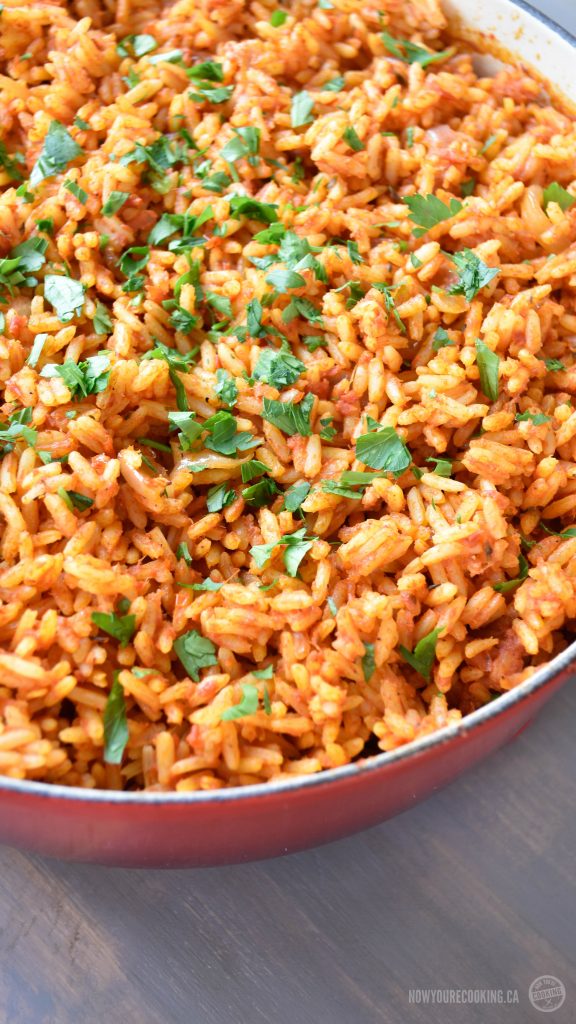
Jollof Culture
Jollof rice is an easy dish to make once you get down to the basics. Once you make it, regardless of the style or variety, you’ll appreciate the difference in flavour.
The key thing to remember is that Africa is a huge continent with a plethora of diverse countries and peoples, which is not a common idea outside of the continent. This is why it’s always good to see a light-hearted battle when it comes to jollof rice so people can express their national identity through some delicious, traditional food and connect on how it’s made.
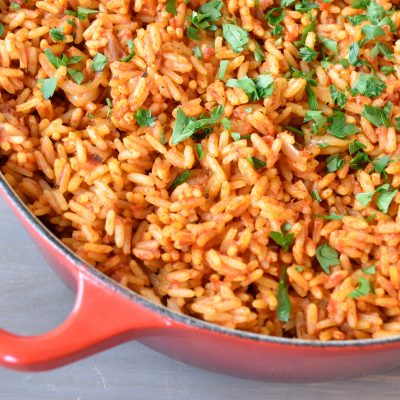
Jollof Rice
Ingredients
For the Tomato-Pepper Sauce
- 2 large tomatoes (or 4-5 Roma tomatoes)
- 2 medium red bell peppers
- 1 medium onion peeled
- 3 cloves garlic peeled
- 1 inch ginger root peeled and grated
- 1 scotch bonnet pepper
For the Jollof Rice
- 3 cups long-grain parboiled rice (475g)
- 1 medium onion sliced
- 4 tbsp canola oil
- 1 tbsp curry powder
- 1 tsp dried thyme
- 2 bay leaves
- 1/2 tsp salt
- 1 small can tomato paste (156mL)
- 2 chicken or vegetable bouillon cubes crumbled
- 4 cups tomato-pepper sauce (950mL)
- 2 cups low-sodium chicken stock, vegetable stock or water
Instructions
For the Tomato-Pepper Sauce/Tomato Stew
- In a blender, puree the tomatoes, onion, garlic, ginger and Scotch bonnet pepper until smooth. Set aside.
For the Jollof Rice
- Wash the rice with cold water until the drained water runs clear. Set aside.
- In medium saucepan, sauté onion in oil over medium heat for 2-3 minutes, until translucent.
- Sprinkle in the curry powder, dried thyme, bay leaves, salt and continue to cook for 1 minute to infuse the flavours.
- Add in the tomato paste, stirring frequently for about 3-4 minutes.
- Stir in 4 cups of the homemade Tomato-Pepper Sauce and the bouillon cubes. Reduce the heat to medium-low. Cover and cook for an additional 10-15 minutes in order to thicken.
- Preheat the oven to 350°F (176°C). Transfer the cooked tomato mixture into a deep baking dish or foil pan.
- Stir in the rinsed rice, coating with the tomato mixture. Then stir in the chicken stock (or water).
- Cover with aluminum foil or a tight-fitting lid and bake in the oven for 30 minutes, or until rice is cooked.
- Remove from the oven and let sit, covered, for 10 minutes before uncovering and fluffing with a fork.
Notes
- Although the recipe works better with fresh tomatoes, if you don’t have any on hand feel free to used canned, diced tomatoes.
- Chop your tomatoes and onions into manageable pieces before adding to the blender.
- You essentially want a 2:3 sauce to rice ratio for this dish. Depending on how juicy your tomatoes are, you might end up with more of the tomato-pepper sauce after you blend it. Any extra can be placed in a container and frozen for future use.
- To cut down on cleanup, you can choose to cook your stew and jollof in a large Dutch oven, or oven-safe pan.
- Make sure that before you put the jollof in the oven, that it’s tightly covered with foil and/or a lid for your baking dish. This helps keep the heat in to steam the rice nicely.
- The good thing about finishing off the rice in the oven is that it doesn’t require constant monitoring like you would if you cooked it on the stove-top, and the rice cooks at an even temperature.
- Let the rice sit covered for 10-15 minutes after you take it out of the oven. It will help dry up some of the extra liquid, so don’t be too worried if your rice looks a bit wet when you first remove it.
- Using parboiled rice is key, as to ensure that you don’t end up with mushy rice. If you don’t have any on hand, then the cooking time will need to be adjusted if another type of rice is used (e.g. Basmati).
- You can garnish the jollof with sliced red onions or sprinkle on some chopped, fresh parsley for colour. You can also stir in some cooked mixed vegetables, like green peas.


